The decoy sites designed to fool Hitler's bombers
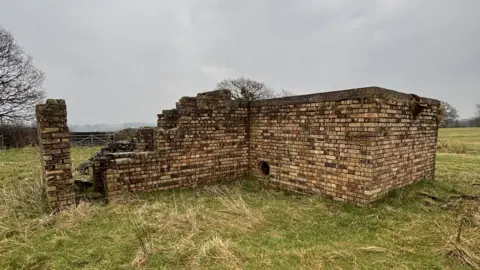 Keele University
Keele UniversityIt was a plan designed to fool Hitler's bombers - four pieces of land in north Staffordshire transformed to look like fake airfields, factories or burning towns.
The aim? To trick the WW2 Luftwaffe into bombing open countryside instead of high-priority industrial targets nearby, such as Shelton Iron and Steel Works, the Michelin Tyre Factory and the Meir Aerodrome.
Fast forward to more than 80 years later and researchers from Keele University and Goldsmiths, University of London, have published a study that looks into three of these "largely forgotten" decoy sites.
"It's been a real eye-opener to work on something which is so obscure and yet so important," said Prof Peter Doyle, military historian and earth scientist at Goldsmiths.
The three sites examined were built as Special Fire sites, also known as Starfish.
Fires would be lit on the ground to fool the enemy into thinking targets were on fire, therefore offloading their bombs.
"The fact is, every single one of these bombers was going to do damage… [so] you have an active defence, you have the aircraft shooting other aircraft down, or, you bring in something clever to persuade the Germans to drop their bombs," said Prof Doyle.
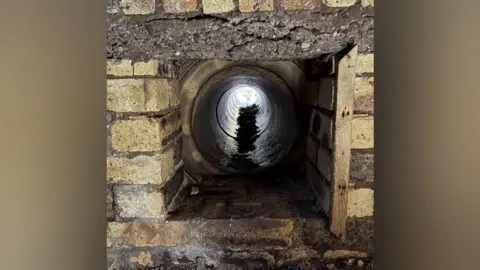 Keele University
Keele UniversityThe features also operated as sites which used lighting to recreate residential areas or working factories with poor blackouts.
They were built along German radio beam directions, which were used as a means of navigation in the early part of the war.
By the end of the conflict, there were 237 Starfish sites across Britain protecting 81 target towns, cities and factories.
It is estimated that about 968 tonnes of German bombs were dropped on decoys across the nation, according to Keele University.
But the fact the sites were phony should not detract from the bravery of those operating them, the researchers explained.
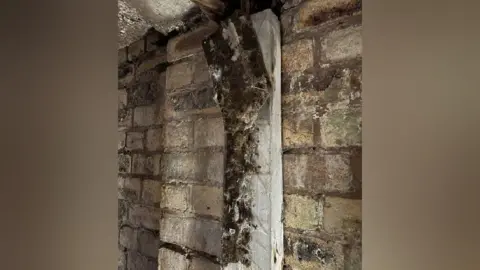 Keele University
Keele University"You're trying to attract the bombers to attack you, it's crazy sounding but this is why I think in the paper we've described how these guys were pretty brave, they were unsung," said Prof Doyle.
As for the value of the work, he explained: "The Michelin Tyre Factory... without tyres, you don't have aircraft that can take off, you can't have trucks.
"Without ceramics you're not going to be able to have particular electronic elements or electrical devices... you're not going to be able to use those in certain munitions factories and so on."
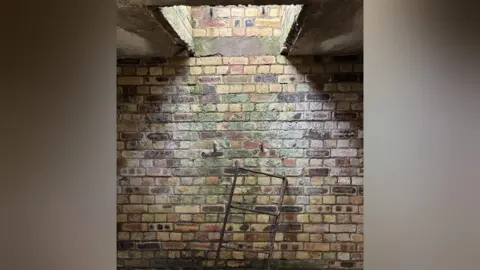 Keele University
Keele UniversitySo, what remains, decades on?
"On site they're variable, it's been about 80 years since they've been used," said Dr Jamie Pringle, reader in forensic geosciences at Keele.
The researchers found control bunkers with diesel generators, which were used to fire up the lights.
"They'd be mimicking some of the coal bits coming out from the trains to try and mimic train glows, I guess," he said.
Electrical systems were still there, as well as ventilation tunnels, bomb blast walls and bricks stamped with "V" for Victory.
"You've even got little bits of blackout curtains still nailed to some of the wooden doorframes," said Dr Pringle.
While some remnants are topside and still visible, many of the sites' secrets are underground.
But how do you get such a detailed picture without threatening what remains?
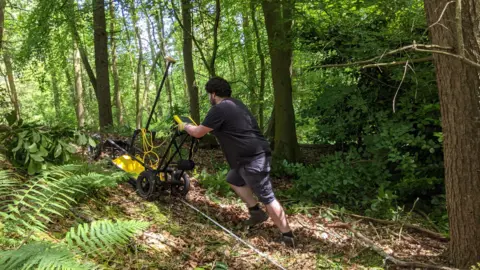 Keele University
Keele UniversityTechniques used in the study included drones, ground-based light detection and ranging (LiDAR), and 360-degree camera imagery.
"This study has shown how modern non-invasive surveying techniques can detect and characterise relic archaeological decoy bombing sites and provide new knowledge on this desperate time for Britain during World War Two," said Dr Pringle.
"We're not physically extracting things, we're not digging stuff out, we're using surface surveying methods to capture 3D virtual tours."
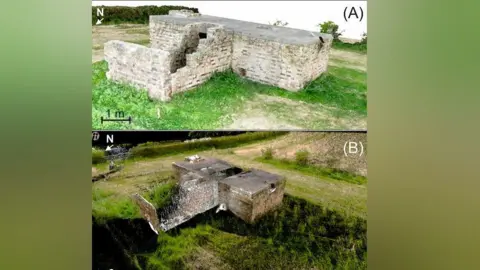 Keele University
Keele UniversityThe approach has been used to train future generations of historians and geologists, with masters students from Keele playing a key role.
But most importantly for the team behind it all, it shines a light on something about which the public has little knowledge.
Kristopher Wisniewski, lecturer in forensic science at Keele, said: "You can see a… slightly yellow brick building... in the middle of the field, no context to it.
"It's only when you start delving into why it's there and what it is, that you start thinking 'actually this is pretty special'."
Follow BBC Stoke & Staffordshire on BBC Sounds, Facebook, X and Instagram.
